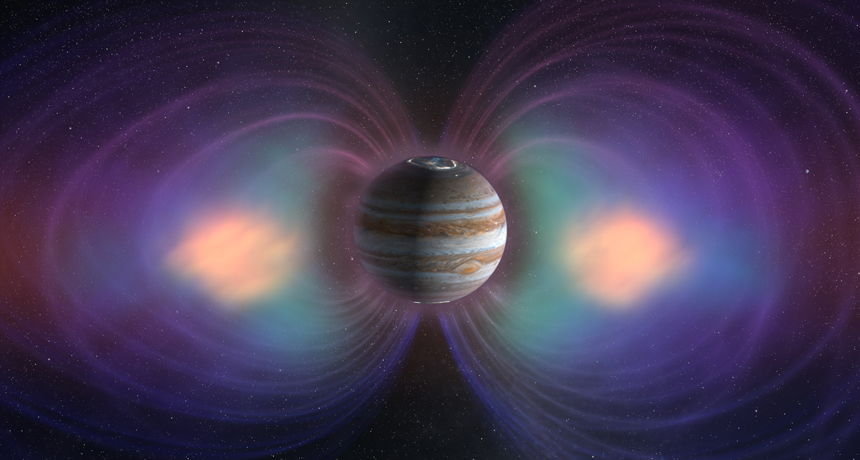Jupiter’s magnetic field is surprisingly weird

If Earth’s magnetic field resembles that of a bar magnet, Jupiter’s field looks like someone took a bar magnet, bent it in half and splayed it at both ends.
The field emerges in a broad swath across Jupiter’s northern hemisphere and re-enters the planet both around the south pole and in a concentrated spot just south of the equator, researchers report in the Sept. 6 Nature.
“We were baffled” at the finding, says study coauthor Kimberly Moore, a graduate student at Harvard University.
The new look at Jupiter’s magnetic field comes courtesy of NASA’s Juno spacecraft, which has been orbiting the planet since July 2016 (SN: 6/25/16, p. 16). Relying on nearly 2,000 measurements of the field outside the planet, Moore and colleagues created maps detailing how the field emerges by calculating how it extends to roughly 10,000 kilometers below the cloud tops.
The results “complicate our picture of Jupiter’s interior,” Moore says. Planetary magnetism arises from electrically conductive fluids within a planet. Typical simulations for how these fluids generate magnetism can explain a field that resembles that of a bar magnet, such as Earth’s or Saturn’s, as well as those that are messy all over, like the ones at Uranus and Neptune. Jupiter’s split personality is harder to explain.
One possibility is that the extreme temperature and pressure near Jupiter’s core create a soup of rock and ice partly dissolved in liquid metallic hydrogen. Here, the interplay of turbulent layers might generate a convoluted magnetic field. Or perhaps squalls of helium rain closer to the clouds stir up conductive layers below, contorting the field before it emerges from the clouds.